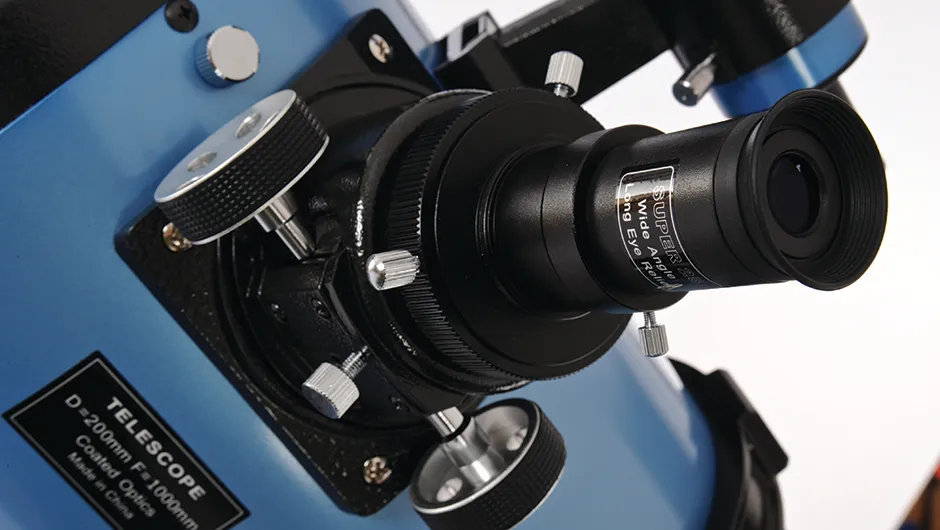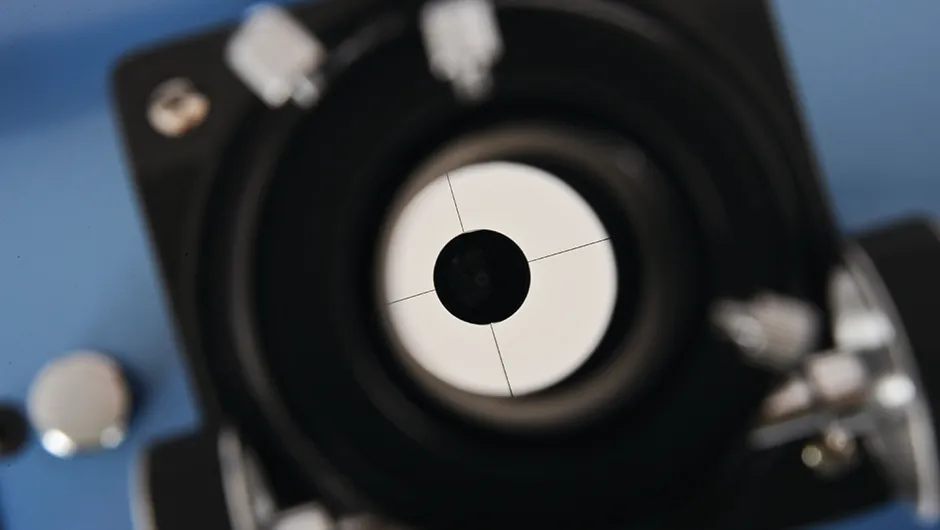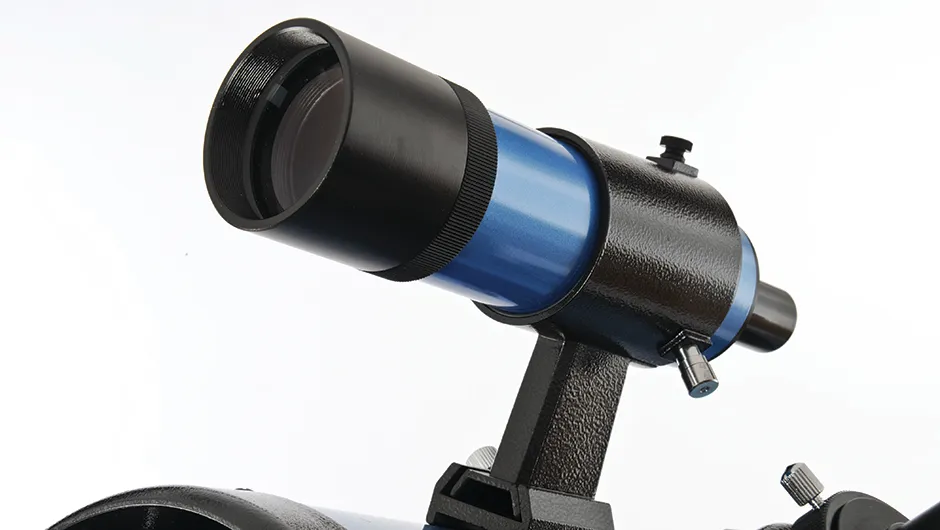The Sky-Watcher Explorer-200P is quite striking with its blue tube, EQ5 mount and sturdy tripod with stainless steel tubular legs.
The mount doesn’t have a polar scope, but for basic alignment you can use the hollow tube for the polar scope in the mount.
The polar scope, motor drives and Go-To can be purchased separately to update the telescope as your needs progress.
What is included is a 9x50 straight-through finder, 25mm and 10mm eyepieces plus a 2x Barlow to which you can attach a camera.
First impressions were that the whole setup seemed quite tall.

However, the eyepiece could still be placed in a comfortable viewing position by rotating the tube in the tube rings.
The mount was the most stable in the test, with no flexing at all.
We also found that the slow-motion axis controls were very smooth to use, with the least amount of play.
We checked the field of view on the star Arcturus using the supplied 25mm eyepiece.
It was pin-sharp across 75 per cent of the view, trailing off only slightly towards the edges: the best of the group in this respect.
Epsilon Lyrae, the Double Double, was a lovely view at low magnification, showing two main stars.
On pushing the magnification with the 10mm and 2x Barlow we got a great view of its four stars, with dark sky between the closer components.
Saturn was also very good with the 10mm eyepiece and Barlow.
The Ringed Planet showed a belt and sharp rings across its pale disc, and we spotted five of its moons.
Turning to our own Moon revealed craters crisp with detail.

Galactic greatness
Deep-sky views were also impressive.Using the 25mm eyepiece, the Whirlpool Galaxy had a large disc that seemed to overlap its smaller companion.
The 10mm brought out subtle mottling on its disc, hinting at detail just on the edge of being resolved.
It was pleasing to see strong mottling along the length of the galaxy M82, which we see almost edge-on, and on our way to the globular cluster M13 we picked out the faint galaxy NGC 6207 with both 25mm and 10mm eyepieces.

The globular started out as a mass of cotton wool, which became a swarm of stars at higher magnification with a hint of the dark propeller shape many observers comment on seeing with larger instruments.
Nebulae looked good, with the Ring Nebula showing as a small hollow ring at low powers, then revealing a small smattering of stars around its ring-like structure at higher magnifications.
We also enjoyed the view of open cluster M39 and the Beehive Cluster with the 25mm; these filled the view with sparkling stars.
The Explorer-200P passed all our tests with flying colours and was a delight to use optically and mechanically.
You get great views for a modest outlay, which helps to compensate for the lack of motor drives and polar scope.
With several upgrade options it will be a useful instrument for many years to come, making it an ideal first or second telescope.
- Price: £399.00
- Aperture: 200mm
- Focal Length: 1,000mm (f/5)
- Eyepieces: 25mm, 10mm, 2x Barlow (1.25" fit)
- Finderscope: 9x50mm, straight-through
- Mount: EQ5 equatorial
- Weight: 24kg
- Supplier: Optical Vision Ltd
- Telephone: 01359 244200
- Website:www.opticalvision.co.uk
This review originally appeared in the July 2009 issue of Sky at Night Magazine

